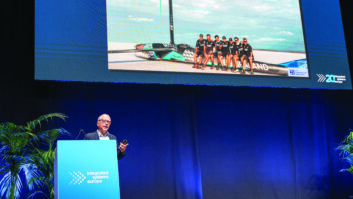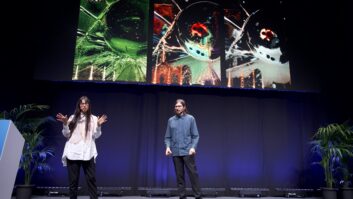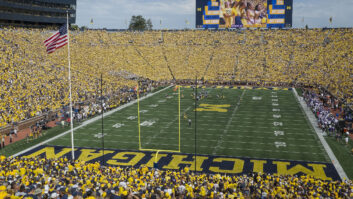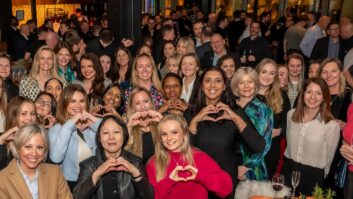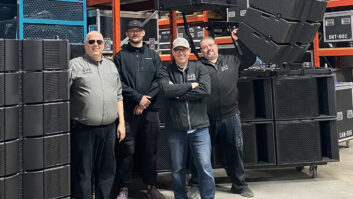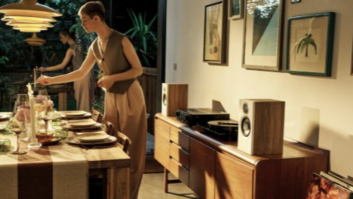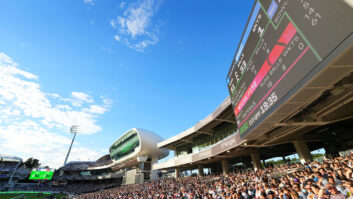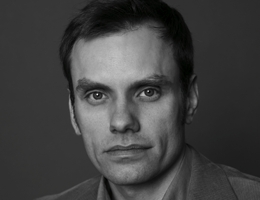
How did you get into the rental/staging business?
After finishing school I studied theatre sciences at Ludwig-Maximilians-University in Munich in the early 1990s. A friend asked me if I want to help out with the technical stuff in a club and I said: “Yes, sure, but I don’t have a clue what to do…”. It turned out to be a really interesting summer with performances, theatre, corporate events, live acts and club nights. I focused on light and, at that time, when Techno came up, you also got strong response from the audience on your lighting performance.
So I quit my studies and started an internship at a company which rented event equipment and also film equipment. After half a year they restructured and I became head of the light department. But after working on film sets as a lighting technician my interest in camera work was aroused. So I went back to become an intern at the camera department and applied at the same time to film schools. I wasn’t accepted, though, – but since I did the editing of my application films all by myself on a PC, I thought it would be a good idea to study digital media science at the University of applied sciences in Brandenburg, which was in 1997 quite a new subject and fortunately I didn’t have to apply. The course of studies was a mix between information technology and media design and I felt very comfortable with that interface. During the term breaks, I worked as an event technician.
After finishing my studies there in 2001, I became co-founder of the network-based mars13 studios in Munich, and my focus was on the more complicated challenges of the media business, like programming CD-ROMs, DVD-videos and especially media presentation and control systems – so media production for events turned out to be main task.
In 2006 Tammo Buhren and Marcus Busler asked me if I wanted to become a partner in zweiB, a rental service company for event and film equipment and we agreed that it would be a benefit for all of us to have a media production service, together with the rental business, to give our customers the full support they need.
What is your favourite project that you’ve ever been involved in?
My favourite project is the Münchner Filmwoche, which we have supported since 2006. Beside the fact that it is always a challenge to find the right technical solution for a week full of different media types (from files to digital film) with little rehearsal time but many presentations, it is always nice to find new ways to support the presentations which we prepare together with our customers. In the beginning, we started with simple PowerPoints and this year we created an interactive stereoscopic real-time 3D presentation. It’s quite amazing what can happen in a few years.
Is there are a particular product that you’ve come to look on as ‘an old favourite’?
That’s easy. For us, with our focus on how to get different content onto a screen or display with no quality loss, the most helpful product was – in the analog days – the Di-VentiX from Analog Way, and today – in the digital era – it’s the Di-VentiX II. Many of our technical solutions are built around this device.
Is there a recent product that’s caught your eye that you think will be very useful in your business?
The multi-awarded Clipster from DVS is a product in which we invested because we know it is useful in many ways; in Germany we call something like that an “Eierlegende Wollmilchsau” (egg-laying wool milk sow), but in reality it is a really powerful DI-Workstation. Because almost all media workflows will become file-based, the challenge is to handle those media files in resolutions up to 4K – and even stereoscopic! Since we are involved in many aspects of the event, media and film business, we see the Clipster as a benefit for those.
For an event, it can function as a hard disk recorder for video playback with up to two 4K-streams and maximum 16 channels of audio. In film production, the Clipster can play back digital dailies from RED, Phantom or ARRI cameras. In post production and broadcast, it gives us capture, edit, colour correction, subtitling and format conversion. And in dgital cinema, we get DCP processing and creation with encoding. The nearest English equivalent to “Eierlegende Wollmilchsau” is probably ‘jack of all trades’ – but the big difference with the Clipster is that it is the master of them all.
www.zweiB.com
